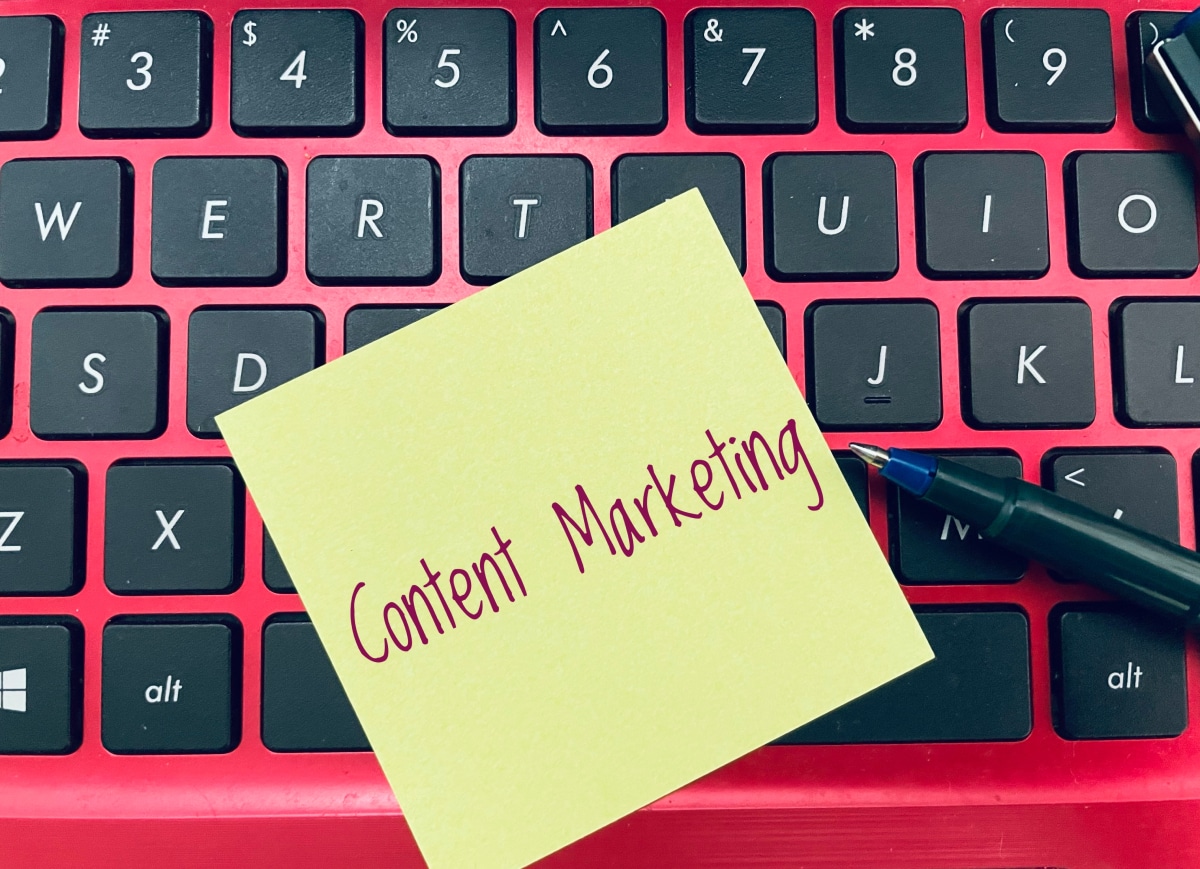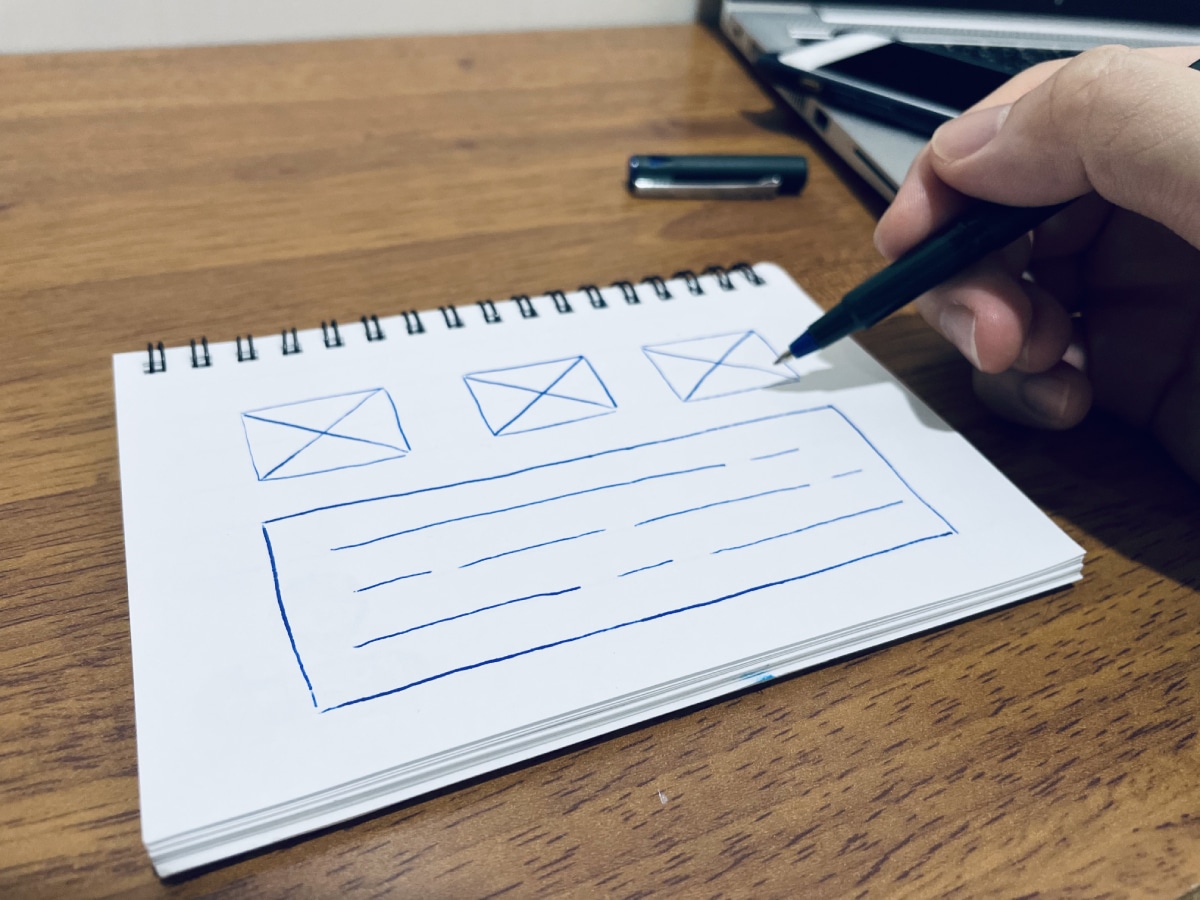How Web Design Can Make or Break Your Content Marketing Strategy
Flip through your favorite magazine. What makes you stop and read a certain page? Is it the striking image, compelling headline, or the arrangement of text that is appealing to your eyes?
Similarly, in today’s cut-throat digital world, eye-catching web design can be the difference between a user staying on your page or bouncing off.
Just as the aesthetic of a physical store can greatly influence customer experience, your web design can significantly impact how visitors perceive your content marketing strategy.
Dive in as we explore the pivotal role web design plays in shaping your content marketing success. Welcome to the junction where art meets business!
Web design has a significant impact on the success of content marketing efforts. A well-designed website can enhance the accessibility, readability, and visual appeal of content, making it more likely to engage and convert visitors into customers.
In contrast, a poorly designed website can hinder these efforts by turning off potential customers through slow load times, difficult-to-navigate layouts, and unprofessional appearances.
Therefore, it's important for businesses to partner with a professional web design agency to ensure their website is optimized for effective content marketing.

Impact of Web Design on User Experience
Web design plays a significant role in the user experience, which is crucial to the success of any content marketing strategy. A user's experience on a website can make or break their engagement with your brand.
In fact, according to research by Adobe, 38% of website visitors will stop engaging with a site if it has unattractive content or layout.
User experience encompasses everything from visual appeal and ease of navigation to page speed and mobile optimization. A website that's difficult to navigate or slow to load can be frustrating and lead users to quickly leave your site, leading to lost conversions and revenue.
Let's say you run an online store selling handmade pottery items. A potential customer finds your site through a Google search and clicks on one of your products.
The page takes too long to load and the layout is cluttered, making it difficult for them to find the buy button. They leave your site and continue their search elsewhere. You just lost a conversion because of poor web design.
To avoid losing potential customers due to poor web design, you need to optimize your site's user experience. This includes ensuring that your pages load quickly and are easy to navigate.
First, let's talk about page speed. As mentioned earlier, even a one-second delay in page load time could lead to a 7% reduction in conversion rates. Use tools like Google PageSpeed Insights or GTmetrix to analyze your website's performance and identify areas for improvement.
Secondly, prioritize responsive web design that works well across all devices (desktops, laptops, tablets, and smartphones). Mobile optimization is especially crucial since 52% of users are less likely to engage with a company if they have a poor mobile experience.
Think of it this way: designing a website without prioritizing user experience is like building a house without considering the needs of its inhabitants.
The roof may look nice, but if the doors are too small or the rooms aren't laid out well, it won't be a comfortable or functional living space.
Some businesses may argue that design doesn't matter as much as content, but that simply isn't true. In fact, design and content go hand in hand -- good content can be overlooked if it's presented poorly. Plus, users are more likely to trust and engage with sites that look professional and polished.
- In today's digital landscape, web design plays a critical role in the success of any content marketing strategy. A user's experience on a website can make or break their engagement with your brand, and poor web design can lead to lost conversions and revenue.
To optimize your site's user experience, prioritize responsive web design that works well across all devices and ensure that your pages load quickly and are easy to navigate.
Businesses that fail to prioritize user experience will likely struggle to attract and retain customers in an increasingly competitive online marketplace.
Enhanced Usability through Navigation
One key aspect of web design that directly impacts user experience is navigation. A poorly designed navigation menu can make it difficult for users to find what they're looking for on your site.
In contrast, straightforward navigation with drop-down menus can make it easy for visitors to quickly access the information they need.
One way to ensure that your site's navigation is effective is to conduct user testing. Your site's target audience will have certain expectations about how they should be able to move around your site.
By running tests with real users, you gain insights into how they interact with your site and can identify areas for improvement. When designing your navigation menu, consider grouping similar pages together under broad categories.
For example, an e-commerce site might have categories for Clothing, Accessories, Home Goods, and Sale Items. Within each category, subcategories (or drop-down menus) can help users find specific products quickly.
Let's say you run a yoga studio website where users can sign up for classes online. If a user is interested in signing up but has difficulty finding the registration page because it's buried in a sub-menu, they'll likely get frustrated and leave your site without signing up.
A clear and intuitive navigation menu not only makes life easier for your website visitors but can also improve your SEO. By including descriptive labels for your pages and categories, you're signaling to search engines what your site is about -- which can help improve your search engine rankings.
Think of your website's navigation menu as the map of a theme park. If visitors can't find their way around or don't know which ride to go on next, they won't have an enjoyable experience.
In contrast, a well-designed map (and website navigation) makes it easy for visitors to quickly find what they're looking for.
Some businesses may argue that a complex navigation menu is necessary to showcase all of their site's content. However, prioritizing usability over quantity can ultimately lead to more engaged users who are more likely to convert.
Importance of Mobile Optimization
Mobile devices have revolutionized the way people access information and interact with websites. Today, people are using their smartphones and tablets to browse the internet more than ever before.
This makes mobile optimization of your website a crucial factor for success in content marketing. Not only does it affect the user experience, but it also influences SEO rankings on search engines.
Consider this: you're on your way home from work, scrolling through your phone trying to find local restaurants that fit your preferences. You stumble across a restaurant's website that appears poorly optimized for mobile with minute texts and a layout that is hard to navigate.
Will you continue browsing or will you find a better restaurant with an optimized website? The latter is more likely.
Additionally, Google's algorithm places higher importance on mobile optimization when determining search engine rankings.
Websites that prioritize mobile optimization tend to rank higher in search engine results pages (SERPs). Therefore, optimizing your website for mobile can improve its chances of showing up at the top of search pages.
Think of your website as a storefront. A well-organized and efficient store layout can make customers feel comfortable and encouraged to shop around. Similarly, an optimized mobile site can make viewers feel comfortable browsing and engaging with your business.
Some might argue that optimizing for desktop users might be more effective due to larger screens and faster speeds. While this may be true for some businesses, optimizing for mobile is crucial in today's increasingly digital age, considering that roughly 54% of all internet traffic comes from mobile devices.
- According to a 2023 report from Sweor, first impressions are 94% design-related; meaning that the vast majority of users' initial reactions to a site are influenced by the visual aspects—not the content.
- In a study conducted by Adobe, it was found that 38% of people will leave a website if they find its layout or content unattractive. This emphasizes the importance of good web design in retaining viewers and making sure they reach the marketed content.
- A report from Google, "The Role of Visual Complexity and Prototypicality Regarding First Impression of Websites," reveals that it only takes 50 milliseconds for users to form an opinion about your website. These snap judgments can greatly impact whether they stay on your site, interact with your content, or leave altogether.

The Role of Web Design in Content Marketing
Web design is an integral element of content marketing strategy because it affects how customers engage with your business online. The creation of engaging visuals and easy-to-follow navigation makes a massive impact on potential customers' first impression.
Consider the way we judge books by their covers. In deciding whether to read a book, our first interaction is with the cover and what it suggests about the content within. Similarly, potential customers judge businesses based on their website appearance.
In a study by Blue Corona, 48% of people said that website design is an essential factor in determining the credibility of a business. This shows that aesthetics play a crucial role in how customers view your company.
Imagine your website as a virtual billboard. People glance at your website as they would look at a billboard while driving on a highway. This brief summary determines if the viewer will retain information or continue scrolling through different websites.
It's true that some may argue that the impact of web design on content marketing strategy is overstated. One might argue, for example, that there are businesses whose sites are not mesmerizing but still manage to attract users through other means of marketing like paid ads and strong social media campaigns.
While this may be true for specific businesses, such exceptions do not sustain over time and ignore the long-term benefits of effective web design strategies.
Enhancing Engagement through Visuals
Visual content is crucial for creating an engaging content marketing strategy. The use of graphics, images, and videos can help convey complex ideas and concepts more effectively, helping readers to better understand the information being presented. This, in turn, can lead to increased engagement and better performance of the content.
For instance, consider a blog post about the benefits of exercise for overall health. Including relevant images and infographics can help illustrate the benefits in a tangible way, making it easier for readers to understand and relate to the information.
Statistics also support the importance of visual content. A study by HubSpot found that blog posts with at least one image receive 94% more views than those without images. Similarly, a report by Buffer revealed that tweets with images get 150% more retweets than those without visuals.
Think of visual content like spices in a dish - they add flavor and appeal to the overall experience. Just as spices can elevate a meal from bland to delicious, visuals can take content from dull to engaging.
With this in mind, it's essential to incorporate high-quality visual content into your website design for improved engagement and a successful content marketing strategy.
The Power of Video in Content Marketing
Video has quickly become one of the most popular forms of visual content used in content marketing strategies. It's versatile, easy to share across platforms, and has been proven to be highly effective in capturing audiences' attention.
Imagine you're browsing social media when you see a video about a new product that catches your eye. If the video is well-made and informative, you're likely to watch it all the way through, or even share it with others who might benefit from seeing it.
Research supports this idea - according to data from Wyzowl, 85% of businesses use video as a marketing tool, and 87% of people report that they would like to see more video content from brands. HubSpot also found that including video on a landing page can increase conversion rates by up to 80%.
Of course, some may argue that producing high-quality video content requires significant resources and investment. While it's true that professional-grade videos can be costly, there are many ways to create effective videos on a budget, such as using smartphones or hiring freelance videographers.
Overall, the power of video in content marketing should not be overlooked. It's an incredibly versatile tool that can help elevate your brand and drive engagement with your target audience.

Website Speed: A Hidden Driver for Content Marketing
In today's fast-paced world, website speed is crucial for the success of any content marketing strategy. Slow loading web pages can have a significant impact on user experience and directly influence bounce rates.
According to a report published by Kissmetrics, 47% of consumers expect a website page to load in 2 seconds or less, and 40% will abandon a website if it takes more than 3 seconds to load. In other words, every second counts when it comes to website speed.
To put things into perspective, think about a time when you visited a site that was slow to load. Did you continue waiting patiently or did you get frustrated and decide to leave?
Chances are that you chose the latter. This happens all too often and can result in lost opportunities for businesses. Website speed plays a hidden but critical role in content marketing, as it directly affects how users engage with your brand online.
Beyond user experience, website speed also impacts search engine optimization (SEO). Search engines such as Google take website speed into account when ranking websites. In fact, Google has publicly stated that site speed is a ranking factor for both desktop and mobile searches.
Therefore, if your website is slow, it may rank lower in search results and ultimately affect the visibility and success of your content marketing strategy.
While website speed is critical for content marketing success, businesses often face challenges in optimizing their websites for faster load times.
Factors such as hosting providers, server location, large image files, and excessive plugins can all contribute to slow page speeds. Additionally, optimizing for website speed may require technical expertise that many business owners may not possess.
For small business owners who lack technical expertise or budget for hiring developers, there are still ways to improve site speed. One way is by compressing images before uploading them onto the website.
Another way is by using a content delivery network (CDN) to host images and static files, which can help to reduce server load times.
With website speed being a crucial factor in the success of any content marketing strategy, businesses need to prioritize optimization efforts to enhance user experience and improve search engine rankings.
However, no matter how optimized a website may be, it's critical that its design aligns with the core values and messaging of the brand.

Aligning Web Design with Brand Messaging
In a study by Lucidpress, it was found that consistent brand presentation can increase revenue by up to 23%. The website's design should align with the brand's overall message and values and reflect them through every aspect of the site's design.
Every element on a website should work towards enhancing brand image and conveying brand values to visitors. This means using appropriate colors, typography, and imagery that reflect what the brand stands for.
For instance, a financial services firm may want to use conservative colors like blue or gray while a fashion retailer may choose bright and bold hues.
Think of your website as an extension of your physical store or office space. Just as you would carefully choose colors, furniture, decor, and lighting to project a certain image in your physical space, you need to do so on your website as well. Doing this will help establish trust with potential customers when they visit your site.
For instance, if you are running a vegan restaurant that prides itself on using locally sourced ingredients to create healthy meals- the website design should reflect this.
The professional web designer or agency should use photographs of fresh produce and clean designs on their site - making sure that there are no graphical elements that conflict with the company’s ethics.
While it's essential for web design to align with brand messaging, businesses shouldn't focus entirely on superficial elements like colors and imagery.
Design features such as layout, site architecture, and content should all work together symbiotically with the visual design to convey the brand message accurately. To summarize, aligning web design with brand messaging goes beyond just surface-level visual aesthetics.
To create an effective website that enhances the overall content marketing strategy, it's essential for businesses to work hand in hand with their web designers to ensure a strong alignment between design elements and brand messaging.
By doing so, businesses can establish trust and credibility with their target audience while providing a seamless user experience that encourages engagement and drives conversions.

